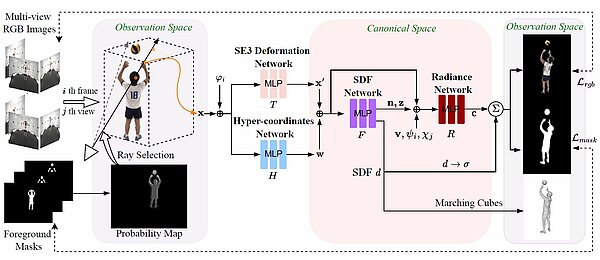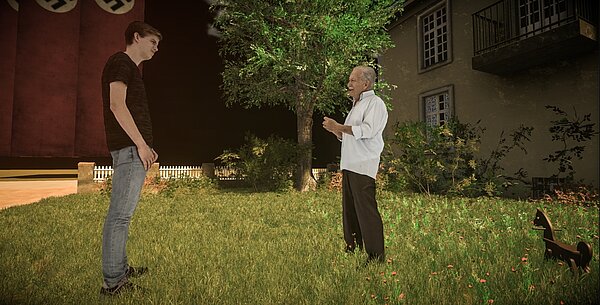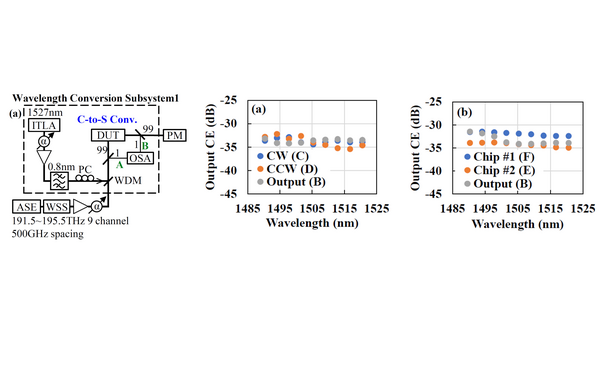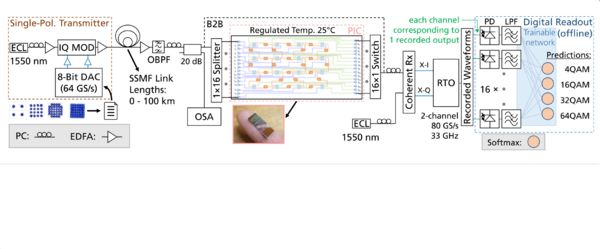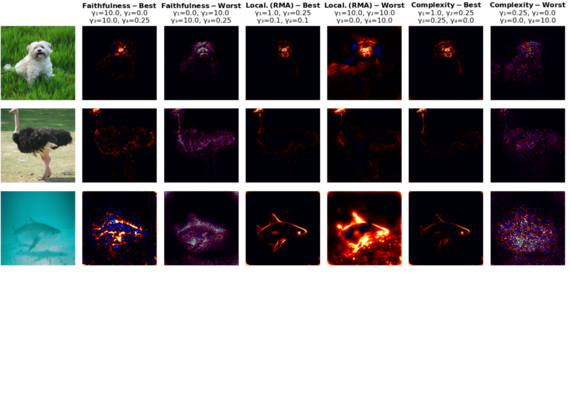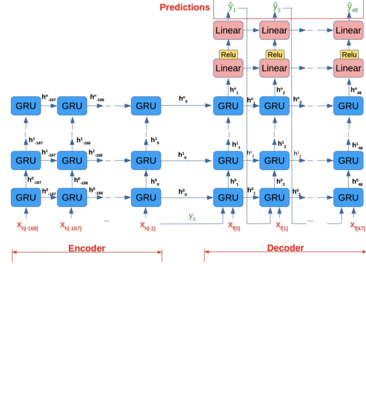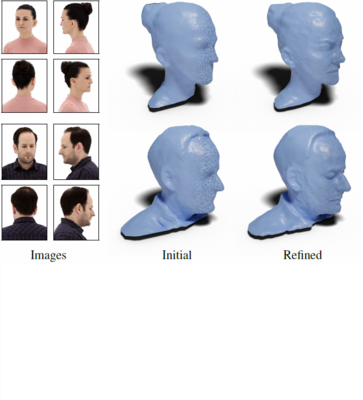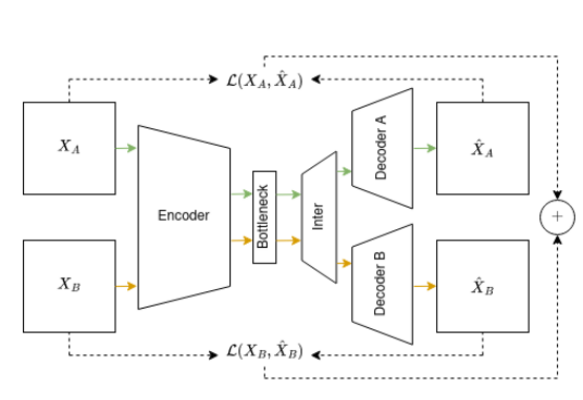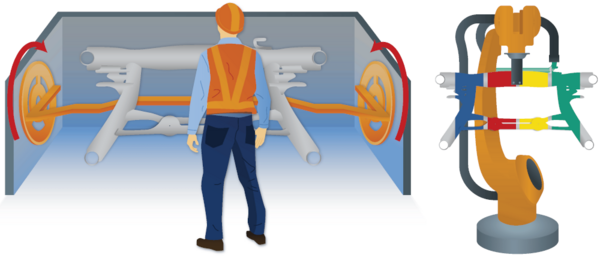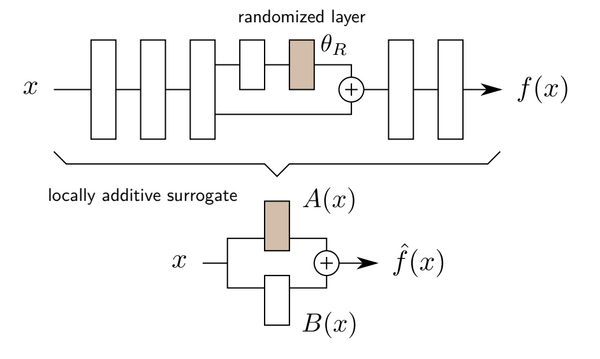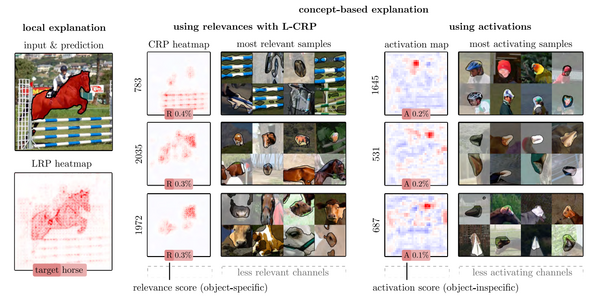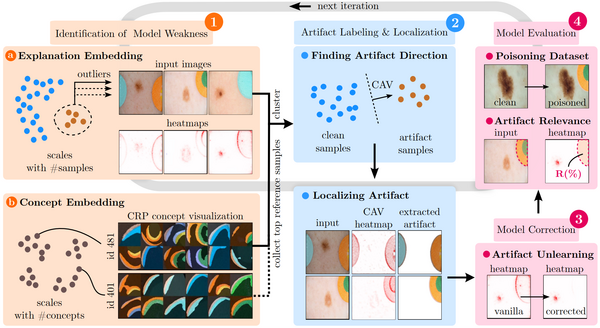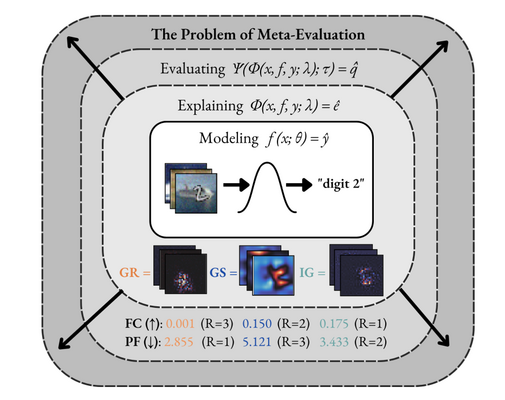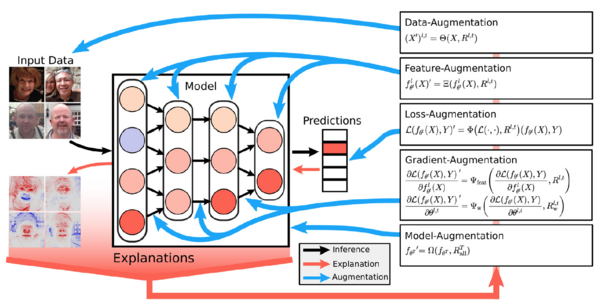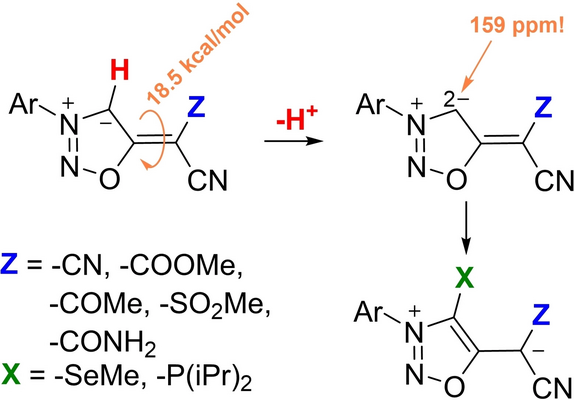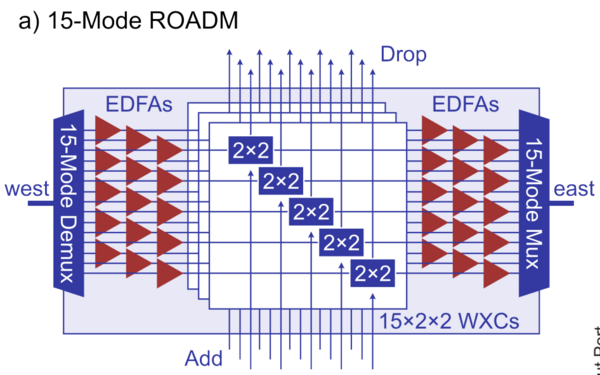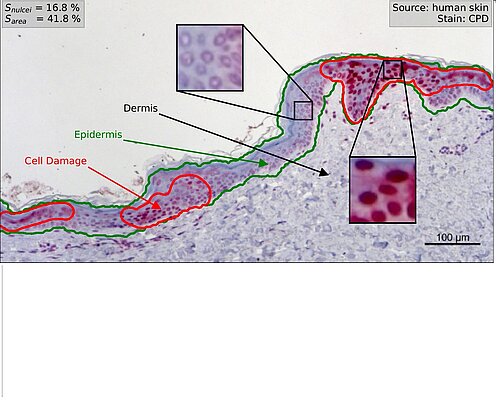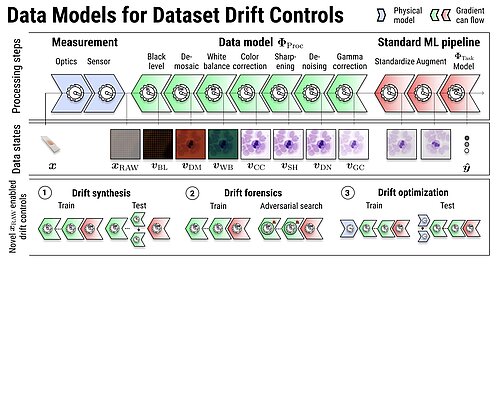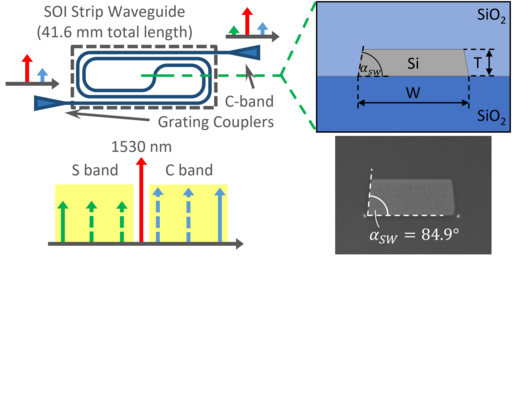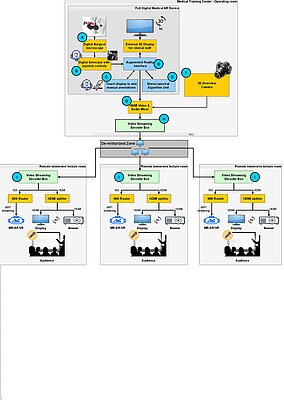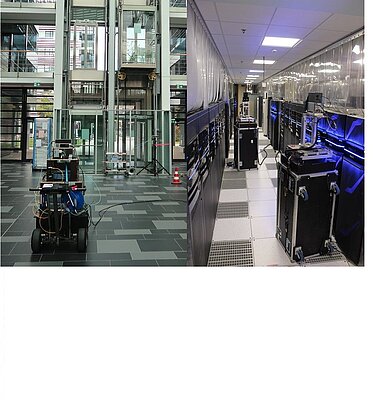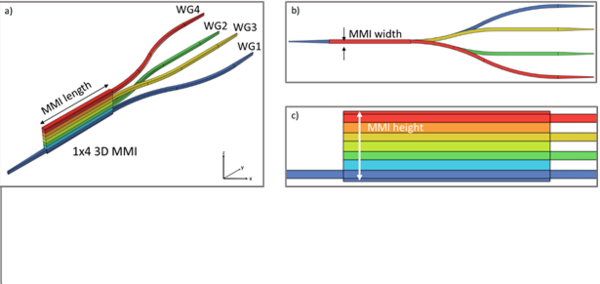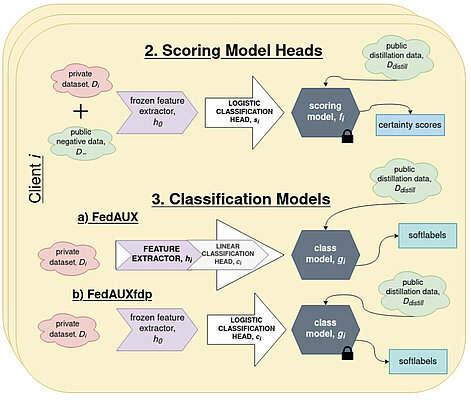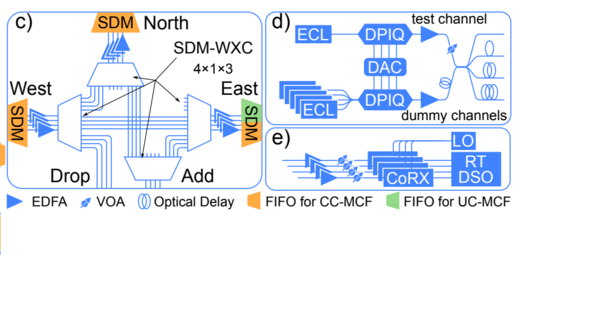Dynamic Multi-View Scene Reconstruction Using Neural Implicit Surface
In this paper, we propose a template-free method to reconstruct surface geometry and appearance using neural implicit representations from multi-view videos. We leverage topology-aware deformation and the signed distance field to learn complex...
Preserving Memories of Contemporary Witnesses Using Volumetric Video
Oliver Schreer, Peter Eisert, Ingo Feldmann, Anna Hilsmann, Sylvain Renault, Marcus Zepp, Wieland Morgenstern, Rodrigo Mauricio Diaz Fernandez, Markus Worchel
Comparison of Polarization Diversity Configurations of SOI Strip Waveguide-Based Dual-Polarization Wavelength Conversion for S-Band Transmission
Using wavelength conversion of our fabricated SOI strip waveguide, we compared experimentally the polarization-insensitive configuration toward S-band real-time transmission. It is found that parallel configuration is 3dB superior in in-out...
Deep-Unfolded Adaptive Projected Subgradient Method for MIMO Detection
Deep-Unfolded Adaptive Projected Subgradient Method for MIMO Detection This paper proposes a MIMO detector based on a deep unfolded superiorized adaptive projected subgradient method (APSM). By learning the design parameters of a superiorized...
Increasing the power and spectral efficiencies of an OFDM-based VLC system through multi-objective optimization
In order to minimize power usage and maximize spectral efficiency in visible light communication (VLC), we use a multi-objective optimization algorithm and compare DC-biased optical OFDM (DCO-OFDM) with constant envelope OFDM (CE-OFDM)...
Experimental Demonstration of Optical Modulation Format Identification Using SOI-based Photonic Reservoir
We experimentally show modulation format identification in the optical domain using Silicon-on-Insulator-based Photonic-Integrated-Circuit (PIC) reservoir. Identification of 32 GBd single-polarization signals of 4QAM, 16QAM, 32QAM and 64QAM is...
Optimizing Explanations by Network Canonization and Hyperparameter Search
Rule-based and modified backpropagation XAI methods struggle with innovative layer building blocks and implementation-invariance issues.
In this work we propose canonizations for popular deep neural network architectures and...
Explainable Sequence-to-Sequence GRU Neural Network for Pollution Forecasting
The goal of pollution forecasting models is to allow the prediction and control of the air quality. While such deep learning models were deemed for a long time as black boxes, recent advances in eXplainable AI (XAI) allow to look through the...
Multi-View Mesh Reconstruction with Neural Deferred Shading
We propose an analysis-by-synthesis method for fast multi-view 3D reconstruction of opaque objects with arbitrary materials and illumination. We represent surfaces as triangle meshes and build a differentiable rendering pipeline around triangle...
Fooling State-of-the-Art Deepfake Detection with High-Quality Deepfakes
Due to the rising threat of deepfakes to security and privacy, it is most important to develop robust and reliable detectors. In this paper, we examine the need for high-quality samples in the training datasets of such detectors. Accordingly, we...
Assessing the Value of Multimodal Interfaces: A Study on Human–Machine Interaction in Weld Inspection Workstations
Multimodal user interfaces promise natural and intuitive human–machine interactions. However, is the extra effort for the development of a complex multisensor system justified, or can users also be satisfied with only one input modality? This...
Shortcomings of Top-Down Randomization-Based Sanity Checks for Evaluations of Deep Neural Network Explanations
While the evaluation of explanations is an important step towards trustworthy models, it needs to be done carefully, and the employed metrics need to be well-understood. Specifically model randomization testing is often overestimated and regarded...
Revealing Hidden Context Bias in Segmentation and Object Detection through Concept-specific Explanations
Applying traditional post-hoc attribution methods to segmentation or object detection predictors offers only limited insights, as the obtained feature attribution maps at input level typically resemble the models' predicted segmentation mask or...
Reveal to Revise: An Explainable AI Life Cycle for Iterative Bias Correction of Deep Models
State-of-the-art machine learning models often learn spurious correlations embedded in the training data. This poses risks when deploying these models for high-stake decision-making, such as in medical applications like skin cancer detection. To...
The Meta-Evaluation Problem in Explainable AI: Identifying Reliable Estimators with MetaQuantus
Explainable AI (XAI) is a rapidly evolving field that aims to improve transparency and trustworthiness of AI systems to humans. One of the unsolved challenges in XAI is estimating the performance of these explanation methods for neural networks,...
Beyond Explaining: Opportunities and Challenges of XAI-Based Model Improvement
Explainable Artificial Intelligence (XAI) is an emerging research field bringing transparency to highly complex and opaque machine learning (ML) models. This paper offers a comprehensive overview over techniques that apply XAI practically to...
Sydnone Methides: Intermediates between Mesoionic Compounds and Mesoionic N-Heterocyclic Olefins
Sydnone methides represent an almost unknown class of mesoionic compounds which possess exocyclic carbon substituents instead of oxygen (sydnones) or nitrogen (sydnone imines) in the 5-position of a 1,2,3-oxadiazolium ring. Unsubstituted...
Bridging the Gap: Gaze Events as Interpretable Concepts to Explain Deep Neural Sequence Models
Recent work in XAI for eye tracking data has evaluated the suitability of feature attribution methods to explain the output of deep neural sequence models for the task of oculomotric biometric identification. In this work, we employ established...
Experimental and Numerical Evaluation of CAZAC-type Training Sequences for MxM SDM-MIMO Channel Estimation
In this work, we experimentally and numerically compare cyclic shifted constant-amplitude zero-autocorrelation (CAZAC) training sequences (TS) with different number of repetitions, sequence lengths and scalings for channel estimation in an...
Demonstration of a 15-Mode Network Node Supported by a Field-Deployed 15-Mode Fiber
Researchers from NICT, University of L’Aquila, Finisar, Prysmian and Nokia Bell Lab demonstrate a 2-line side 15-mode spatial division multiplexing network node based on fifteen 2×2 wavelength cross-connects to direct up to six 5 Tb/s, 15-mode,...
Semantic modeling of cell damage prediction: A machine learning approach at human-level performance in dermatology
In this work we investigate cell damage in whole slice images of the epidermis. A common way for pathologists to annotate a score, characterising the degree of damage for these samples, is the ratio between healthy and unhealthy nuclei. The...
Data Models for Dataset Drift Controls in Machine Learning With Optical Images
In this study, we pair traditional machine learning with physical optics to obtain explicit and differentiable data models. We demonstrate how such data models can be constructed for image data and used to control downstream machine learning...
Optimization and Performance Evaluation of Single-mode SOI Waveguides for Ultra-broadband C-to-S Wavelength Conversion
We implemented an all-optical C-to-S band wavelength converter based on low-complexity SOI strip waveguides. Its bandwidth was optimized and crosstalk issues were modeled numerically. These devices were experimentally evaluated to have a...
Telepresence for surgical assistance and training using eXtended reality during and after pandemic periods
Existing challenges in surgical education (See one, do one, teach one) as well as the COVID-19 pandemic make it necessary to develop new ways for surgical training. This work describes the implementation of a scalable remote solution called...
Berlin V2X: A Machine Learning Dataset from Multiple Vehicles and Radio Access Technologies
The Berlin V2X dataset offers high-resolution GPS-located wireless measurements across diverse urban environments in the city of Berlin for both cellular and sidelink radio access technologies, including information on the physical layer,...
Uniform Analysis of Multipath Components From Various Scenarios With Time-Domain Channel Sounding at 300GHz
For the first time, channel measurements at 300 GHz from various environments and different measurement systems are jointly analyzed and published.
1x4 Vertical Power Splitter/Combiner: A Basic Building Block for Complex 3D Waveguide Routing Networks
A novel polymer-based 1x4 vertical multimode interference (MMI) coupler for 3D photonics is presented. It connects four vertically stacked waveguide layers with a spacing of 21.6 µm. The functionality is demonstrated on a fabricated device.
FedAUXfdp: Differentially Private One-Shot Federated Distillation
Federated learning suffers in the case of non-iid local datasets, i.e., when the distributions of the clients’ data are heterogeneous. One promising approach to this challenge is the recently proposed method FedAUX. This work presents a fully...
Coherent LiDAR with 2D quasi-static MEMS mirror scanning
Coherent LiDAR concepts for automotive applications are of increasing interest due to their superior performance, especially at longer range. Here, MEMS mirrors can be used as a compact scanning device. We demonstrate the operation of such a...
Colorless and Directionless ROADM for Meshed Coupled-Core Multicore Fiber Networks
Researchers from NICT, University of L’Aquila, Finisar and Sumitomo demonstrate the first meshed spatial-super-channel switching SDM network using field-deployed coupled-core multicore fibers with a 3 line-side, colorless, directionless ROADM....
